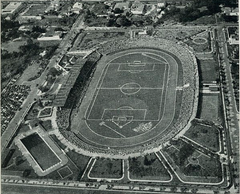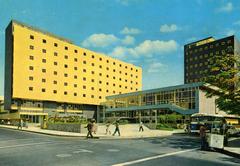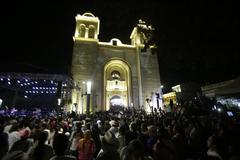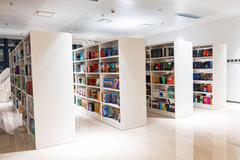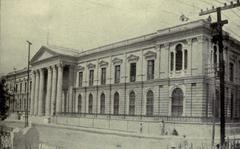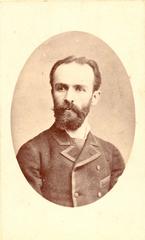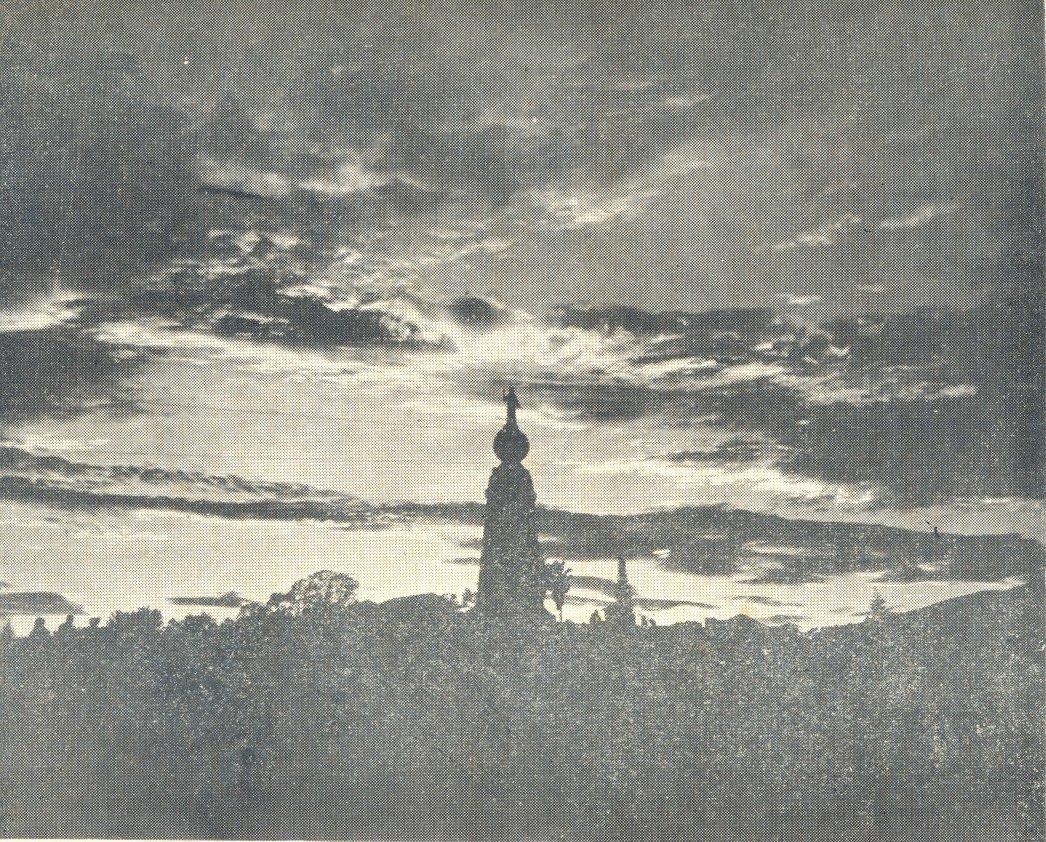
Monumento al Divino Salvador del Mundo: Visiting Hours, Tickets, and Travel Guide
Date: 04/07/2025
Introduction
The Monumento al Divino Salvador del Mundo (Monument to the Divine Savior of the World) is the most iconic landmark in San Salvador and a powerful symbol of national identity for El Salvador. Located at the heart of the city in Plaza El Salvador del Mundo, this striking monument depicts Jesus Christ with outstretched arms atop a globe, representing both faith and the unity of Salvadorans worldwide. Its historical significance, architectural grandeur, and central role in cultural and religious life make it a must-visit destination for travelers, pilgrims, and history enthusiasts alike (El Salvador Tips, hellotravel.com).
This guide provides everything you need to know before visiting: detailed history, cultural relevance, practical information on visiting hours and tickets, accessibility, nearby attractions, travel tips, and answers to frequently asked questions.
Table of Contents
- Historical Background
- Visiting the Monument
- Cultural and Spiritual Significance
- Monument Structure and Design
- Visitor Experience and Practical Tips
- Nearby Attractions
- Events and Festivals
- FAQs
- Visuals and Media
- Conclusion
- References
Historical Background
Origins and Early Development
The monument’s story begins in the early 20th century with President Manuel Enrique Araujo (1911–1913). The base of the monument was originally crafted as part of his tomb and remained so for nearly three decades (Alluring World, Wikipedia). In 1942, as part of the first National Eucharistic Congress, the Araujo family donated the pedestal to the city in honor of El Salvador’s patron, Jesus Christ (El Salvador Tips, Revista Literaria El Candelabro).
Construction and Inauguration
Architect José María Barahona Villaseñor designed the monument, which features a four-sided modernist pedestal topped by a globe and a statue of Christ with outstretched arms. The monument was inaugurated on November 26, 1942, during the centennial celebrations of Central American independence, reinforcing its national and religious symbolism (Trek Zone).
Symbolism and National Identity
The open arms of Christ symbolize hope, unity, and faith. The globe represents the universality of the Savior and the Salvadoran diaspora (Revista Literaria El Candelabro, Everything Explained). The plaza has long served as the central venue for religious, civic, and social celebrations (Sage-Advices).
Restoration and Modern Relevance
In 1986, a major earthquake dislodged the statue. A national restoration campaign quickly repaired the damage, transforming the monument into a symbol of Salvadoran resilience (Wikipedia, Everything Explained). The 2010 plaza renovation modernized the site and reaffirmed its role as a gathering place for all Salvadorans (El Salvador Tips).
Visiting the Monument
Location and Accessibility
The monument is centrally located on Alameda Roosevelt, easily accessible by bus, taxi, or rideshare (Matts Next Steps). The plaza is flat, with paved walkways and ramps for wheelchairs and strollers.
Visiting Hours
- Open 24 hours a day, 7 days a week
- Best to visit during daylight hours (8:00 AM–6:00 PM) for safety and optimal viewing
Tickets and Admission
- Free entry: No tickets or reservations required
Safety and Security
The area is generally safe during the day, with a visible police presence. Exercise the usual precautions after dark.
On-site Amenities
- Benches and gardens for rest
- Food vendors and cafes nearby
- No public restrooms on-site (use facilities in nearby cafes or malls)
Cultural and Spiritual Significance
The monument is a unifying emblem for Salvadorans, appearing in official documents, currency, and tourism campaigns. It is the focal point for major national and religious celebrations, most notably the annual Fiestas Agostinas in August, which honors El Salvador’s patron saint with parades, processions, music, and fireworks (sansalvador.com, hellotravel.com).
Religious events such as Semana Santa (Holy Week) also see processions beginning or ending at the monument. Its restoration after the 1986 earthquake further symbolizes faith and national unity (hellotravel.com).
Monument Structure and Design
- Statue of Christ: Italian sculptor Firminio Cali created the approximately 4-meter-tall statue, which stands atop a blue and green globe.
- Pedestal: The globe rests on an 18-meter-high modernist pedestal, painted to echo the Salvadoran flag (EAA, Pineqone).
- Materials: Reinforced concrete and painted plaster ensure durability.
- Lighting: Nighttime illumination enhances the monument’s grandeur and makes it a popular photographic subject (Triplyzer).
Visitor Experience and Practical Tips
Best Time to Visit
- Dry season: November to April, especially February for optimal weather (Weather2Travel, Travellers Worldwide)
- Early morning or late afternoon: For soft lighting and comfortable temperatures
- During festivals: For vibrant cultural experiences, though crowds will be larger
What to Bring
- Sunscreen, sunglasses, and a hat for sun protection
- Bottled water
- Comfortable walking shoes
- Camera or smartphone for photos
Accessibility
- Paved walkways and ramps for wheelchairs and strollers
- Some uneven surfaces; watch your step
Language
- Spanish is the primary language; some tour guides and locals speak basic English
- Translation apps are helpful
Nearby Attractions
- National Palace: Historical government building
- Metropolitan Cathedral: Major religious landmark
- Museo Nacional de Antropología Dr. David J. Guzmán: Archaeological and cultural exhibits
- MARTE (Museo de Arte de El Salvador): National art museum
- Zona Rosa: Dining and entertainment district
- Parque Cuscatlán: Urban green space
Events and Festivals
- Fiestas Agostinas (early August): Parades, religious processions, concerts, and cultural activities
- Transfiguration of Jesus Christ Festival (August 6): Major religious celebration
- Independence Day (September 15): Patriotic events and gatherings
Arrive early during festivals to secure a good spot, and expect road closures and large crowds.
FAQs
Q: What are the visiting hours for the Monumento al Divino Salvador del Mundo?
A: The plaza is open 24/7, but visits during daylight hours (8:00 AM–6:00 PM) are safest and most enjoyable.
Q: Is there an entrance fee or ticket required?
A: No, visiting the monument and plaza is completely free.
Q: Are guided tours available?
A: Yes, local tour operators offer city tours that include the monument. Check with your hotel or Yonder Tours.
Q: Is the site accessible for people with disabilities?
A: The plaza is largely accessible, with paved walkways and ramps.
Q: Are restrooms available?
A: Not on-site; use nearby cafes or shopping centers.
Q: What’s the best time for photography?
A: Early morning, late afternoon, and evening for the illuminated monument.
Visuals and Media
- Images: Monument at sunset, festival crowds, panoramic plaza views
- Alt tags: Use keywords like “Monumento al Divino Salvador del Mundo visiting hours,” “Monumento al Divino Salvador del Mundo tickets,” and “San Salvador historical sites.”
- Interactive maps: Available on local tourism websites
Conclusion
The Monumento al Divino Salvador del Mundo is more than just a monument; it is the beating heart of San Salvador’s heritage, faith, and unity. With round-the-clock access and free admission, it offers an enriching cultural and spiritual experience for every visitor. Its location near other key landmarks makes it the perfect starting point for exploring the vibrant capital city.
Stay up to date on events, tours, and travel tips by downloading the Audiala app and following us on social media. Discover more about El Salvador’s history and culture, and let the Monumento al Divino Salvador del Mundo inspire your next adventure.
References
- Revista Literaria El Candelabro
- El Salvador Tips
- hellotravel.com
- sansalvador.com
- Trek Zone
- Matts Next Steps
- Yonder Tours
- Wikipedia
- Sage-Advices
- Triplyzer
- Pineqone
- Everything Explained
- EAA
- Woodestinations
- Weather2Travel
- Travellers Worldwide



